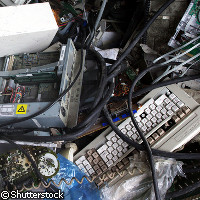Working together means recycling better, Italian study shows
Researchers in Italy have proposed a new reverse-logistics model to help manufacturers manage returned electronics equipment more efficiently. EU legislation passed in 2003 requires all Member States to have an operational system for recovering discarded electronics. The new study, published in the International Journal of Logistics Systems and Management, offers valuable insights into how the product take-back system might be optimised as a whole. Advances in technology, together with the shortening lifespan of electronic goods, has led to an increasing volume of electronic waste being generated every year. Indeed, this category of waste, which poses significant environmental risks, represents a growing fraction of the 1.3 billion tonnes of rubbish produced in the EU annually. To increase the reuse and recycling of discarded electronics products, the EU passed product take-back legislation in 2003 that allows consumers to return their used e-waste free of charge. However, only one third of electrical and electronic waste in the EU is collected and treated separately. Accordingly, the European Commission proposed a revision of the directives in 2008 in an effort to stem the increasing volume of e-waste being treated inappropriately (e.g. being dumped illegally) and to reduce the administrative burdens of take-back programmes. The EU's Waste Electrical and Electronic Equipment (WEEE) regulations shift the responsibility of disposing of electronic goods from the consumers to the manufacturers. This means that manufacturers need to develop their reverse logistics systems so as to minimise the costs of such retrieval. Existing management approaches focus on specific waste categories and on the specific organisations involved; the take-back system is far from optimised as a whole. Led by Dr Marco Melacini of the innovative solutions company Avery Dennison Italia, the latest study suggests that the process of recycling used goods and retrieving components for reuse could be profitable. They propose a linear programming model that will help improve the flow of obsolete and broken goods. 'Reverse logistics encompasses a broad range of activities within, and outside of, logistics including: product returns, source reduction, recycling, material substitution, reuse of material, waste disposal, and refurbishing, repair and remanufacturing,' the study reads. WEEE regulations require producers to add identification codes to any new products, provide information for adequate recycling and set up (and finance) a system for the collection of end-of-life goods. The researchers explored options for a take-back system based on alliances, where all producers belong to a consortium and manage a single retrieval system and members pay in according to their annual productivity. The model shows how to manage the assignment of 'WEEE flows' to a consortium of producers. Every consortium partner has a cost structure that depends only on its capability to manage these flows. The members collect a share of the flows that is determined by a central coordinating system; they do not have to manage their own products. The amount of waste each member pays for is proportional to their annual estimation of sales, and is adjusted annually. Continuity is essential for such a system to operate efficiently, the authors say, and bringing stability to the system is key to reducing administrative costs. The study presents the case of the Danish supply chain and take-back system, and establishes that producers working together have a far greater capacity to comply with regulations than they would by working alone. In the European context, the authors point out that recycling in this way offers economies of scale and allows consortia to operate in a free market; success in this area would provide substantial environmental benefits.
Countries
Denmark, Italy



